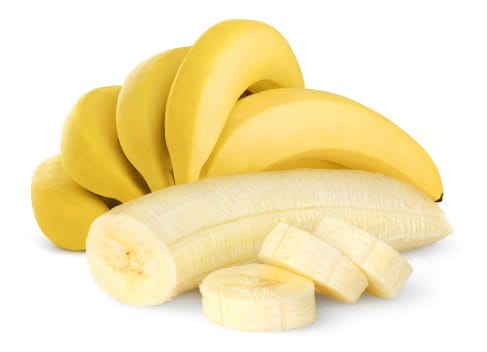 Although it’s not a typical protein-based allergy, a significant number of individuals do have sulfite allergy.
Although it’s not a typical protein-based allergy, a significant number of individuals do have sulfite allergy.
In Canada and the U.K., the chemical additive makes the list of allergens that must be labeled. On the Canadian Food Inspection Agency’s list of the priority 11 foods that cause the most frequent and severe allergic reactions, 10 of the names will be more familiar – peanuts, tree nuts, milk, eggs, fish, shellfish, soy, wheat, sesame and mustard.
But the eleventh spot on the list goes to sulfites (or sulphites). These chemical additives are used to stop food from browning or spoiling. An estimated 1 per cent of Americans and Canadians react to sulfites. The prevalence is higher in those with asthma. An estimated 4 per cent of asthmatics are sensitive to these additives.
In the United States, if a packaged food (such as dried fruit) has more than 10 parts per million (ppm) of sulfites, that must be disclosed on the label. The same goes for wine and alcohol, above 10 ppm must be declared on the bottle or can. In Canada the food rules are more stringent: If sulfites are added to a packaged food that at any level, the label must say so. For wine, the labeling requirement kicks in at over 10 ppm.
Sulfites can turn up in a wide range of packaged foods. Dried fruit and vegetables can have very high levels of sulfites. As well the additives are used in baked goods, canned vegetables, soup mixes, jams, pickled foods, potato chips, trail mix, molasses, shrimp, guacamole and maraschino cherries.
The Canadian agency has collected medical reports of sulfite-related reactions, ranging from nausea and abdominal pain to anaphylactic attacks. At least one Canadian has died.
What’s Different about Sulfite Allergy?
Sulfites can trigger symptoms in susceptible individuals that appear to be allergic reactions, including anaphylaxis and asthma attacks. Yet, scientists still don’t know how they do this. Unlike the other food groups on the list, sulfites are chemicals, not proteins.
Researchers don’t yet know whether sulfites cause the immune systems of some people to respond abnormally or whether they set off some other mechanism that causes allergic-like reactions. The researchers also haven’t figured out why sulfites pose a threat to some people and not to others.
One theory is that people sensitive to sulfites have a genetic abnormality that hinders the body’s breakdown of these chemicals. However, Dr. Susan Tarlo, a respiratory physician at Toronto’s University Health Network and a specialist in lung disease and allergic response, says her extensive research does not confirm that theory. Another theory links sulfite allergy to a lack of B12 vitamins, but that research is still not conclusive.
If you develop hives or have trouble breathing after a restaurant dinner and a glass of wine and suspect you may have this sensitivity, the first step is to see an allergist and confirm what is causing your reaction.
Sulfite Allergy: Testing, Prevalence
The only way to be sure that it is a sulfite allergy is to undergo an oral challenge in a hospital setting. In such a test, doctors will give you a glass of juice with sulfites to see whether you respond. (For sulfites, Tarlo says a skin-prick test is not reliable enough.)
Canada’s food inspection agency has added sulfites to its top 11 allergens list because they cause allergic-like reactions in such a significant number of people. (One per cent of the Canadian population equates to about 380,000 individuals.)
But there is no scientific evidence that the prevalence of sulfite sensitivity has increased in the few past decade. According to Tarlo, the incidence may simply be the result of better diagnosis and awareness. In the United States, sulfite reactions did rise back in the 1970s and 1980s – and six deaths were even reported. In those times, sulfites were widely used in salad bars to make raw fruits and vegetables more attractive. Studies show the reactions declined with a ban on spraying sulfites on fruits and vegetables to be eaten raw, as well as improved food package labeling.
Canadian regulations prohibit sulfites from being added or sprayed on fruit and vegetables that are intended to be consumed raw, with a key exception – grapes. (In the U.S. residues on table grapes must be under 10 ppm).
Wine and Sulfites
Sulfite sensitivity is sometimes discovered in children but is most often identified in adults. This may relate to the fact that, as adults, we begin to drink wine and beer. As most wines ferment, sulfites occur naturally, and winemakers usually add more of the chemicals to prevent spoiling.
However, some organic wineries today carefully avoid these additional sulfites. In the United States, several organic wines have been deemed to fall within safe guidelines of under 10 parts per million of the chemicals.
But not everyone with the sensitivity has summoned the nerve to try these newer vintages. The reactions that GIynnis Brassil of Vancouver gets to sulfites might be clinically described as “mild” when compared to life-threatening food allergies. But don’t tell her that: if she drinks regular wine or eats a food containing sulfites, Brassil develops a migraine so painful that “my hair hurts.”
What to Know about Labels
In the U.S., packaged food labeling only occurs if greater than 10 parts per million (ppm) of sulfites are present. Therefore, consumers whose physicians tell them to avoid even levels of sulfites below 10 ppm need to be mindful of food labels. At lower levels, the word ‘sulfites’ (or ‘sulphites’) may not appear, but rather the chemical compound instead.
Here are names to watch out for: potassium bisulfite, potassium metabisulfite, sodium bisulfite, sodium metabisulfite, sodium sulfite, sodium dithionite, and sulfurous acid. All are sulfites.
There is another mysterious aspect to sulfite allergy: It is highly individualistic. Some people can drink a glass of wine. Others will react after a spoonful of sauce that contains a dash of red wine. This means that each person with a sulfite sensitivity will have to tailor his or her plan of action for dealing with food.
If you are sensitive to sulfites, you’ll want to get advice from your allergist and likely also a dietitian about foods that are safe to eat.
Staying Safe with Sulfite Allergy
1. If you’re sensitive to sulfites, avoid dried fruit and vegetables.
2. Most wines produce natural sulfites in the fermentation process, and sulfites are also added as a preservative. But some organic wineries are creating wines with no added sulfites. For instance, LaRocca Vineyards in California says their wines also have no natural sulfites or only traces of it. LaRocca’s red wine contains no sulfites, while its white contains only 1 part per million of the chemical.
3. Check wine labels. Under U.S. and Canadian rules, wine with less than 10 parts per million of sulfites is considered safe for most who are sensitive. Winemakers are required to list the sulfite content when it is greater than that. If the the wine contains only 8 ppm, the winemaker is allowed to label it: “sulfite-free”.
Also, don’t leave “sulfite-free” bottles of wine on the shelf for long; they may spoil.
4. Always read package labels, but be cautious. Even if you don’t see sulfites on the label, you may want to check with a manufacturer if it’s a food that would usually contain sulfites. Also, remember that some foods prepared in grocery stores delis and bakeries don’t have to be labeled.





